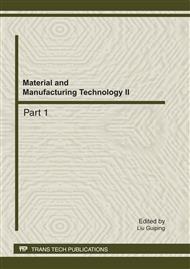p.623
p.629
p.634
p.641
p.646
p.651
p.657
p.662
p.667
Cardiovascular Multi-Parameter Monitoring System during Surgery
Abstract:
Cardiovascular Monitoring[1], which is important evidence used to analyze the therapeutic efficacy, plays a significant role in the operation. A multi-parameter monitoring system is introduced in this paper. The system not only detects initial physiologic signals like photoplethysmographic pulse signal, blood pressure and electrocardiogram signal, but also extracts cardiovascular parameters, including the amplitude of photoplethysmogram, area ratio, pulse beat interval, pulse decay time constant, etc. The operating principle of the system, hardware composition, a flow chart of software module, direction of data flow and algorithm for extracting parameters are introduced. Finally, a validation clinical experiment was undertaken, and results confirmed that the system realized real-time monitoring of cardiovascular parameters, which reflected the variation of cardiovascular system during surgery and could assist doctors with drug administration.
Info:
Periodical:
Pages:
646-650
Citation:
Online since:
September 2011
Authors:
Price:
Сopyright:
© 2012 Trans Tech Publications Ltd. All Rights Reserved
Share:
Citation:


